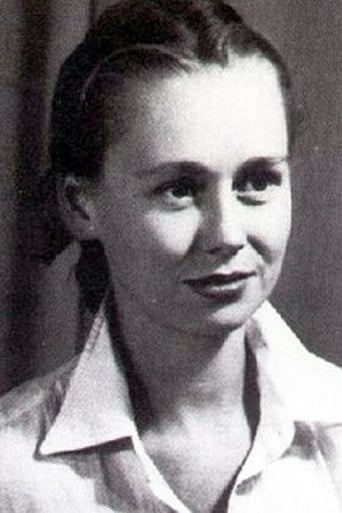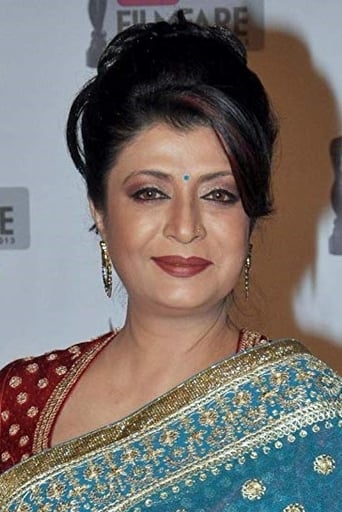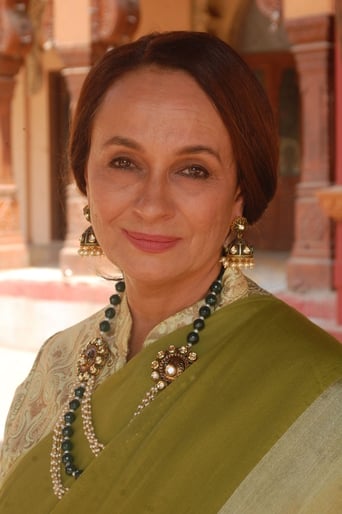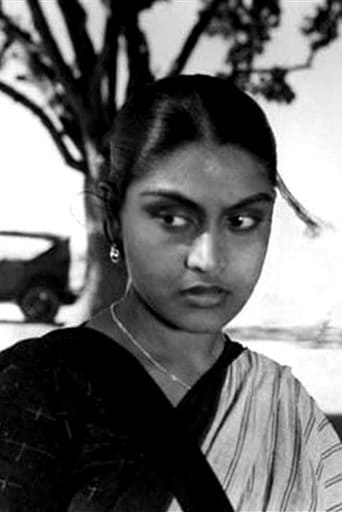Reptileenbu
Did you people see the same film I saw?
Onlinewsma
Absolutely Brilliant!
Geraldine
The story, direction, characters, and writing/dialogue is akin to taking a tranquilizer shot to the neck, but everything else was so well done.
Isbel
A terrific literary drama and character piece that shows how the process of creating art can be seen differently by those doing it and those looking at it from the outside.
Peter Young
36 Chowringhee Lane is the story of a middle-aged school teacher who is trapped in her loneliness. Her name is Violet, and after the marriage of her beloved niece, who is her only relative apart from her brother, she lives as a recluse all alone, having only one joy of teaching Shakespeare at school where not a single student really cares about it. Her brother Eddie is hospitalised in grave conditions. At the end of her working day, Violet always finds herself in her small apartment located on a small street in Kolkata. Her address is where the film takes its title from. She has no one but her cat, her nostalgic memories which keep running as flashbacks in her head, and some letters from her niece. Violet seeks human company and affection, and one day she gets a new hope in this regard as she meets Nandita, a past student of hers, with her boyfriend Samaresh. Samaresh says he wants to work on a novel, but has no place where he could do it in peace, and expectedly, Violet offers him her flat. What an innocent and kind Violet does not realise is that the couple actually need this place to do their 'stuff' while she is away at work. In anyway, while there is a certain exploitation in their behaviour and they clearly take advantage of Violet's need for companionship, still a beautiful friendship grows between them. The couple respect her, take her to the cinema, have dinner with her, and the three often meet and enjoy their time together. Violet feels revived to have found a sort of a new family, and well, they definitely do have great affection and regard for her, but not as much as she thought.36 Chowringhee Lane touches the most tender chords in the viewer's heart. While watching it, I was surprised by how involved I was in the story. It is a profound, realistic and deeply moving chronicle of a woman's quiet desperation and struggle through the silence in her life. The film is so authentic that one can really feel a slice-of-life reflection. It is incredibly subtle in mood and execution. Aparna Sen's direction is extraordinary. With simplicity, soul and accuracy, she portrays the world of the middle-class, Christian Anglo-Indian community in post-Independence India in a way that no film ever did. And of course, she scores big time as she unfolds and illustrates with detailed delicacy Violet's lonely present and rich past, which is sensitive, absorbing and very lifelike. Sen makes this film really easy to relate to, building a serene narrative style that creates a thought-provoking, quietly powerful picture. Technically the movie is stupendous, as Sen is assisted by some of the best film crew professionals in the Indian film industry. The art direction is very impressive, particularly the way Violet's house is decorated, which, as someone in the film mentioned, appropriately looks like an antique shop. This really brings forward her yearning for past days. The background score, by the great Vanraj Bhatia, is haunting, enhancing the narrative and bringing further depth to the story. Ashok Mehta's cinematography is plain brilliant. He captures the images of Violet's house, and of all the characters, particularly of Violet herself, focusing the viewer's attention on her eyes which reflect her solitude.This of course brings to the next point—actually the highpoint—in this movie. Jennifer Kendal is astonishing as Violet Stoneham, a woman who is lonely but in spite of that, is never embittered, being very lovely, kind, caring and positive. With heartbreaking anguish, touching vulnerability and total warmth and authenticity, Kendal brings Violet to life in a heartfelt performance that tugs at the heartstrings and resonates in memory long after the film is over. Her portrayal is amazingly nuanced, subtle, and she manages to convey a lot with her mere presence and her eyes which, as said, reflect her troubling reality and inner feelings. No matter who you are, you will not be indifferent to this performance. This, by and large, is the finest triumph of 36 Chowringhee Lane, and it will always be the main reason behind its efficiency. Kendal is supported by several great actors. Soni Razdan, in the brief role of her niece Rosemary, is very beautiful and natural. Geoffrey Kendal, Jennifer's real-life father, plays her brother Eddie in this film. He is not bad but he overacts at times. Dhritiman Chatterjee and Debashree Roy play the couple, Samaresh and Nandita, respectively. First of all, they have a wonderful chemistry, which is very important because the film has a minor but significant sub-plot involving their sexual relationship. Acting-wise, both are very good, and Roy is attractive and a bit more likable simply because her character is kinder as she feels more guilty. To sum it up, 36 Chowringhee Lane is a wonderful picture, a memorable portrait of loneliness and humanity which India should always be proud of.
Pankaj-3
After Mr & Mrs Iyer, this was my second movie by Aparna Sen. And as the other reviewer noted, I see her work as being influenced by Satyajit Ray - depth of human emotions captured by powerful camera work and extremely sensitive direction.Film also reminded me of SWAYAM, directed by Mahesh Bhatt, acted by Waheeda Rahman. A similar old mother and deserted by her children. In the end, in both the films, the mother emerges lonely. While Swayam shows Waheeda as a more independent and powerful character, Jennifer Kendal in 36 Chowringhee Lane is portrayed as more sensitive, delicate and brimming with human emotions. Even Satyajit Ray's Aparajito emerges to be much more independent and powerful compared to Jennifer here.All the comparisons apart, Aparna Sen gets the full marks for one of the most sensitive and sentimental films of India. Climax will make you cry for Jennifer and will remind you of your own parents.
sanjeev-6
36 Chowringhee Lane is a very sensitive account of a lonely old Anglo Indian lady (Violet) living in Calcutta. In the time of this film, India has been independent from the British Raj for about 30 years. A new Indian identity is emerging. Calcutta has a cosmopolitan young culture, well versed with the west. However, in this culture Violet has no place, she is an outsider.We need to look at the 'Anglo Indian' class before we can completely understand the tenderness of this film. 'Anglo Indian' was a class created by the ruling British. They were Christian and well educated. The colonial masters needed this class as much as the Anglo Indian class needed them. They were given jobs in the Civil Service, Army, Customs, Railway (as in the case of Violet's father), and other plum government jobs.When India became independent, this privilege was withdrawn. These jobs were thrown open to the wider populace ( as one character moans -'even the natives are getting educated now').Most of the Anglo Indians left India and settled in USA, UK and Australia.Violet lived in these changing times. Her family are dead, and she tends to their graves with care. Her only surviving relative is an infirm brother....and she had lost her betrothed to the War.Yet she struggles on in life with fortitude, and without bitterness. She loves the country she was born in and treats everyone with kindness.As her age creeps up on her, she realises that the new times have no place for her. Her naivety and her emotional weakness is exposed, and she is left pondering her future in a large and a ruthless city.This film serves as an excellent epilogue to the end of the Empire in India.It shows the individual suffering that the ordinary people went through.Especially the Anglo Indians, after their privileged status was withdrawn by history and some were left to fend for themselves.
arnab_dasswayam
Remembering the old lady Violet--unforgettably characterized by Jennifer Kendal--of 36 Chowringhee Lane any serious film viewer may continue to search the gender images so carefully built up by Aparna sen along her directorial career till now. In 36 Chowringhee Lane Aparna Sen, the well-acclaimed actress successfully begins to expand her originality as an artist of film as a whole. Almost at thirty-five years of a sovereign national identity a female Indian director portrays an aged English lady teacher still living in Calcutta, which was the capital of previous British colony in India. The individual as a trace of a colonial past-- living in a particular commonly known address of a nostalgic metropolis--succeeds to send us a universal appeal of anybody in the periphery of any society.
The intensity of loneliness has been unfolded by amazingly sensitive details of the daily existence of Violet Stoneham. The composition of the frames and sequences are reminiscent of classic directors. In a few sequences the detailing drags, but it sincerely illustrates the monotony inherent in the life of the hardworking loner.The ill, old brother and a Bengalee couple appear to be the only close human associations of Violet. Both the parties leave her life at the end of a less eventful, courageous narrative, in which all the casts make excellent justice to the characters.In spite of the desperate effort of Violet her brother Eddie dies. On the other hand, one of the Bengalee students Nandita and her boyfriend Samaresh, coming of an affluent social background care little to utilize her affection and her crying need for human relation, even after their marriage. Touching on a sexist sub-context Aparna manages her realism to keep authentic in featuring the young vulnerable lady Nandita less deceptive and dishonest than her decisive husband Samaresh. The matching insertion of a critically projected, insensitive urban attitude towards such a motherly subject also helps the accommodation of the local Bengali context. Debate might arise about the purpose of representing the only insensitive, self-centered Bengalees.The surrealist treatment of past and unconscious in representations of dream, love, pain and fear of death of lonely English individual introduces the Indian spectators to a different film language. It helps them visualizing an exotic theme growing out of their own cultural space. All the unfamiliar aspects of the film do not suppose to isolate the Indian viewers from the characters, because the passion of the narrative from the very beginning may engage any spectator effectively in feeling and identifying a sphere of isolation of an"other" lady. The uses of sequences of silence, soundless presence of animals and insects, emptiness in space, elements in the individual sets, the lights and the always-sensitive camera positions voice in unison a deep care for a quietly vanishing human entity. The last and the loneliest sequence which seems to be the fare-well to all the human attachments of Violet takes a poetic gesture towards the whole horizon of helpless humanity.One might perceive the presence of Satyajit Ray behind many areas of the making of the film, apart from his assigned assistance. If there was anything questionable in the possible inspiration, the outstanding journey of Aparna Sen from 36 Chowringhee Lane onwards pays her own genuine tribute to all her great inspirations.




